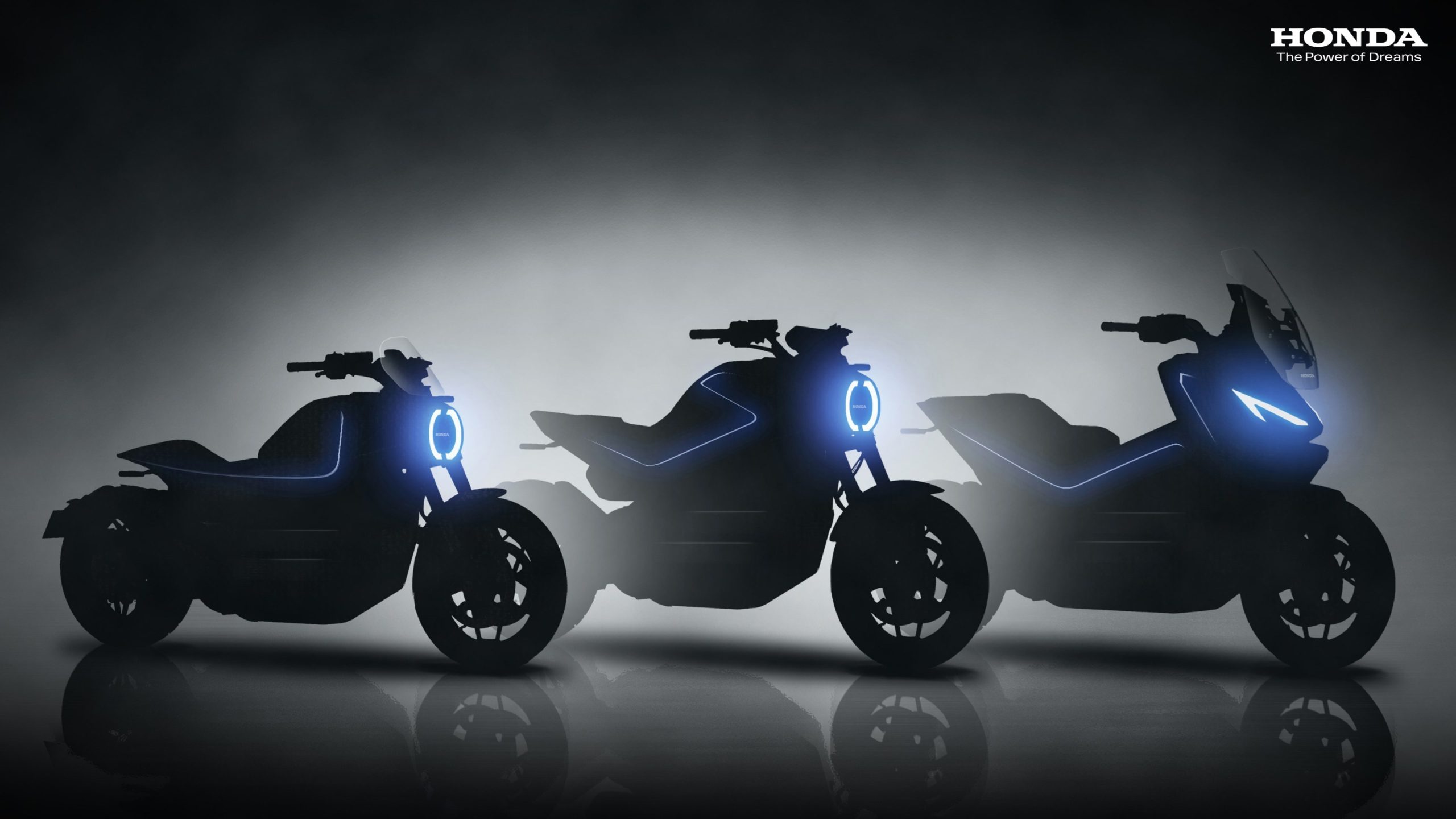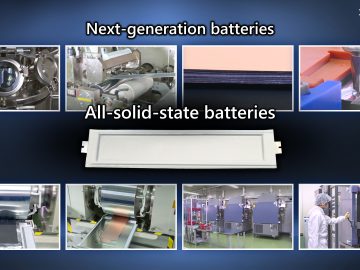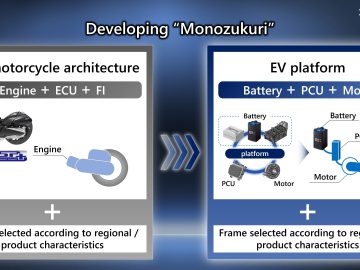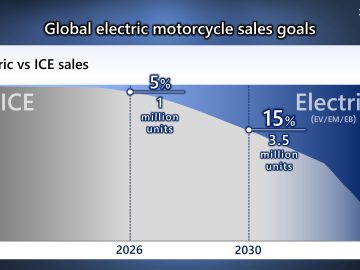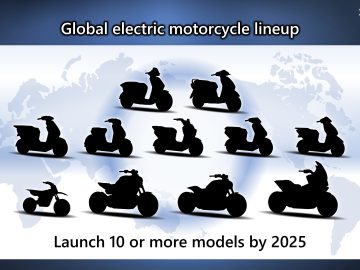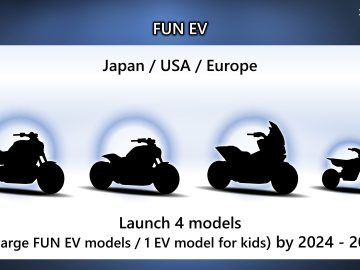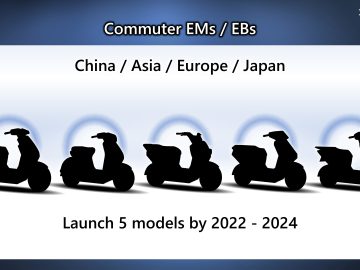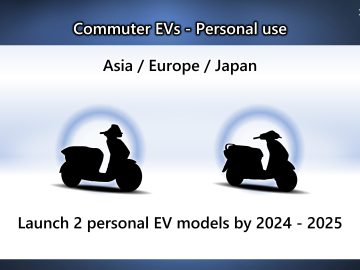‘Between 2024 and 2025, three large electric Honda Motorcycles’
Still driving pleasure, thanks to smart software
A salient detail is that Honda promises the same driving pleasure with its electric motorcycles, including integration of smart software. The goal is to achieve carbon neutrality in all products and business activities by 2050. All this was announced at a press conference presented by Kohei Takeuchi (Director, Executive Vice President and Representative Executive Officer) and Yoshishige Nomura (Managing Officer).
Electrification Initiatives Honda Motorcycles
Curious about all the plans in detail? Then feel free to read the epistle below from Honda. There Honda does a detailed job of explaining what it has in store and how it thinks about electrification of motorcycles.
Challenges due to weight and price
To meet the use situations and requirements of customers worldwide, Honda motorcycles cover a wide range (from small commuter to large pleasure models) and are used worldwide in both developing and developed countries.
Demand for commuter models is especially high in developing countries, where customers depend on motorcycles in their daily lives. However, the move to electric models faces challenges such as weight and price. Demand for electric models depends largely on government incentives and regulations and the availability of charging infrastructure.
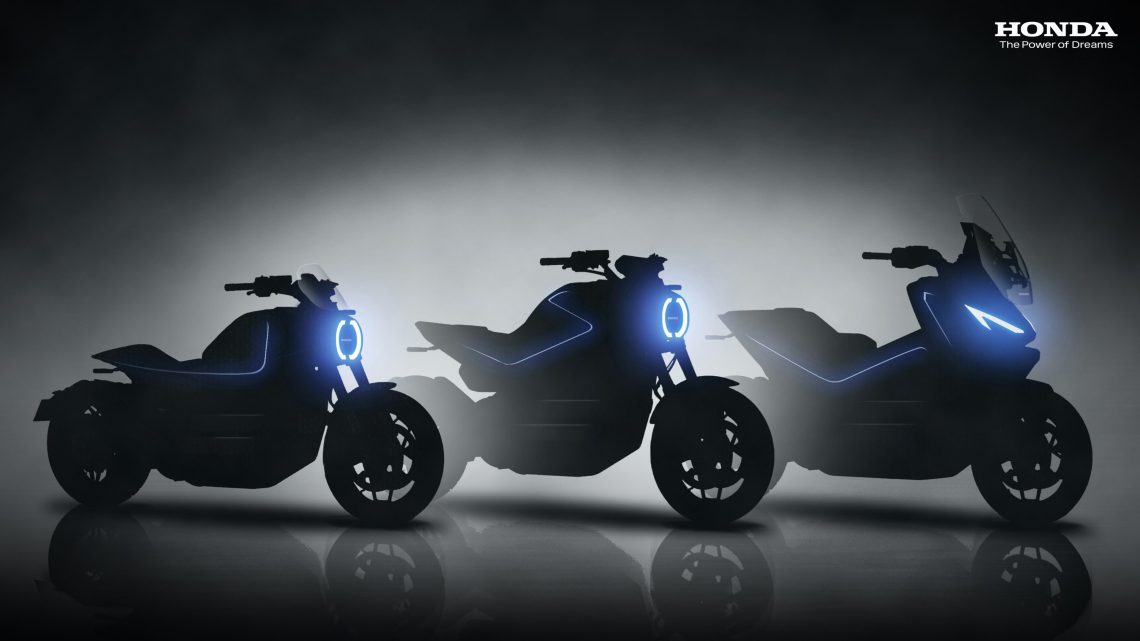
ICE development not yet at an end
Given these circumstances, Honda will continue to develop ICE while accelerating the electrification of motorcycles, the main focus of its environmental strategies. The goal is to achieve carbon neutrality in all motorcycle products by the 2040s.
Honda is also actively developing models powered by CO2-compensating fuels such as gasoline-ethanol blends. In addition to the flex-fuel (E100) model released in Brazil, Honda plans to launch flex-fuel (E20) models in India – one of the major motorcycle markets – starting in 2023 and flex-fuel (E100) models in 2025.
A little explanation. E100 is gasoline-ethanol blended fuel. There are many ratios, from 100 percent gasoline to 100 percent ethanol. E100 is 100 percent ethanol, and E20 is 20 percent ethanol.
The rollout of electric motorcycles
As the market expands, Honda will market electric motorcycles that cover a wide range of customer requirements. By bringing more than ten new electric commuter and pleasure models to market by 2025, Honda aims to achieve annual sales of 1 million electric motorcycles within the next five years, and 3.5 million (about 15 percent of total sales) starting in 2030.
Honda Mobile Power Pack
As a solution to the problems of widespread acceptance of electric motorcycles related to travel distance and charging time, Honda has developed the Honda Mobile Power Pack (MPP) with interchangeable batteries. MPP is well suited for business use, such as delivering small packages, and the Honda e: business bike series, equipped with MPP, already used by Japan Post and Vietnam Post.
As companies become more environmentally conscious, Honda is looking to expand its business EVs globally. Honda is currently conducting joint trials with Thailand Post and plans to begin production and sales of Benly e: in Thailand in September.
For personal use, Honda plans to release two electric commuter models between 2024 and 2025, spread across Asia, Europe and Japan.
EM and EB forensic models
More than 90 percent of the current global electric motorcycle market (about 50 million units) today consists of EMs and EBs.
An EM machine is an electric moped with a maximum speed of between 25 km/h and 50 km/h. The EB category is an electric bicycle with electric assistance. The maximum speed comes out to 25 km/h or lower.
In China – the world’s largest market – EMs and EBs are widely used as a convenient form of mobility, and Honda is using its strengths in local development speed to develop products for this market. As the EM/EB market grows worldwide, Honda plans to release five compact and affordable EM and EB models between this year and 2024, across Asia, Europe and Japan, in addition to China.
“Three major EV models will follow between 2024 and 2025, spread across Japan, the US and Europe.”
Electric pleasure models
Honda is actively developing electrified models in the Pleasure category, in addition to EVs for commuting. Based on the EV platform under development for the Pleasure category, Honda plans to release three major EV models in this category between 2024 and 2025, across Japan, the US and Europe. Honda will also introduce the Kids Fun EV model, designed to pass on the joy of driving to the next generation.
Platform for electric motorcycles
Honda will develop and expand an electric motorcycle platform based on its competitive “Mono-zukuri” knowledge (art of making things) by developing ICE platforms in combination with the three main components for electric vehicles: batteries, PCUs and motors.
By meeting customer demands with highly efficient production methods, Honda will provide driving pleasure in its electric vehicles that rivals that of its ICE vehicles, at an affordable price.
Solid-state batteries
With respect to batteries, a core component for electric vehicles, Honda will actively use its own resources with the goal of using them in its full solid-state batteries currently being developed for its motorcycles.
Standardization of batteries
– In Japan, four major Japanese motorcycle manufacturers have agreed on common specifications for interchangeable batteries based on the JASO TP21003 guideline. By this, Honda is referring to the Society of Automotive Engineers of Japan, Inc. Organization (JASO) technical document TP21003, the “Guidelines for Interchangeable Batteries of Two-Wheeled Electric Vehicles.
In Europe, Honda participates in the European battery consortium. The battery consortium in Europe includes the brands Honda, Kawasaki Motors, Suzuki Motor Corporation and Yamaha Motor Co. In India, Honda and its partnerships are promoting the standardization of interchangeable batteries. That’s the Swappable Batteries Motorcycle Consortium (SBMC), established for the large-scale adoption of electric motorcycles and other small electric mobility products.
Software Development
With software development, Honda Drivemode – a subsidiary of Honda – will develop software for smartphone-based connected services. Honda aims to create a user experience (UX) that continuously improves the quality of driving through connectivity, beginning with its electric commuter models planned for 2024. This could include the use of connectivity for optimal routes that take into account the remaining EV travel distance, notification of charging points, safe driving guidance and after-service support.
Looking ahead, Honda will work to build a connected platform that generates more value by not only connecting its motorcycles, but also by linking Honda products and achieving connectivity beyond their product domains.

